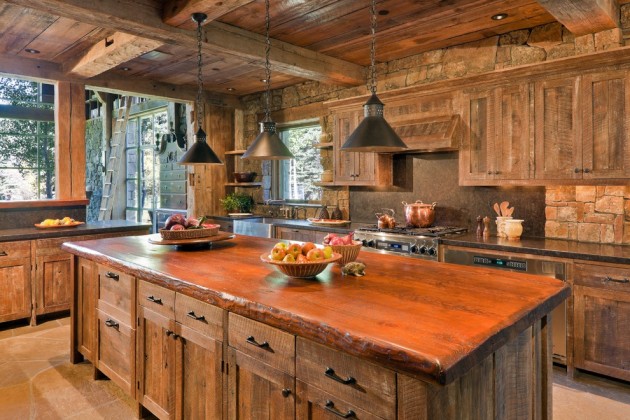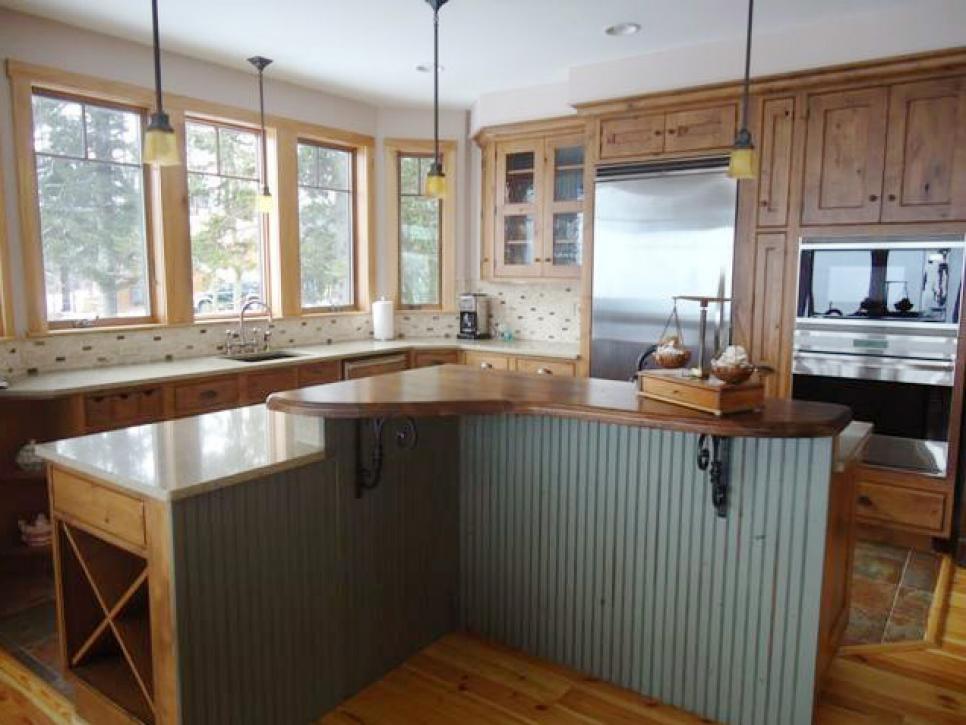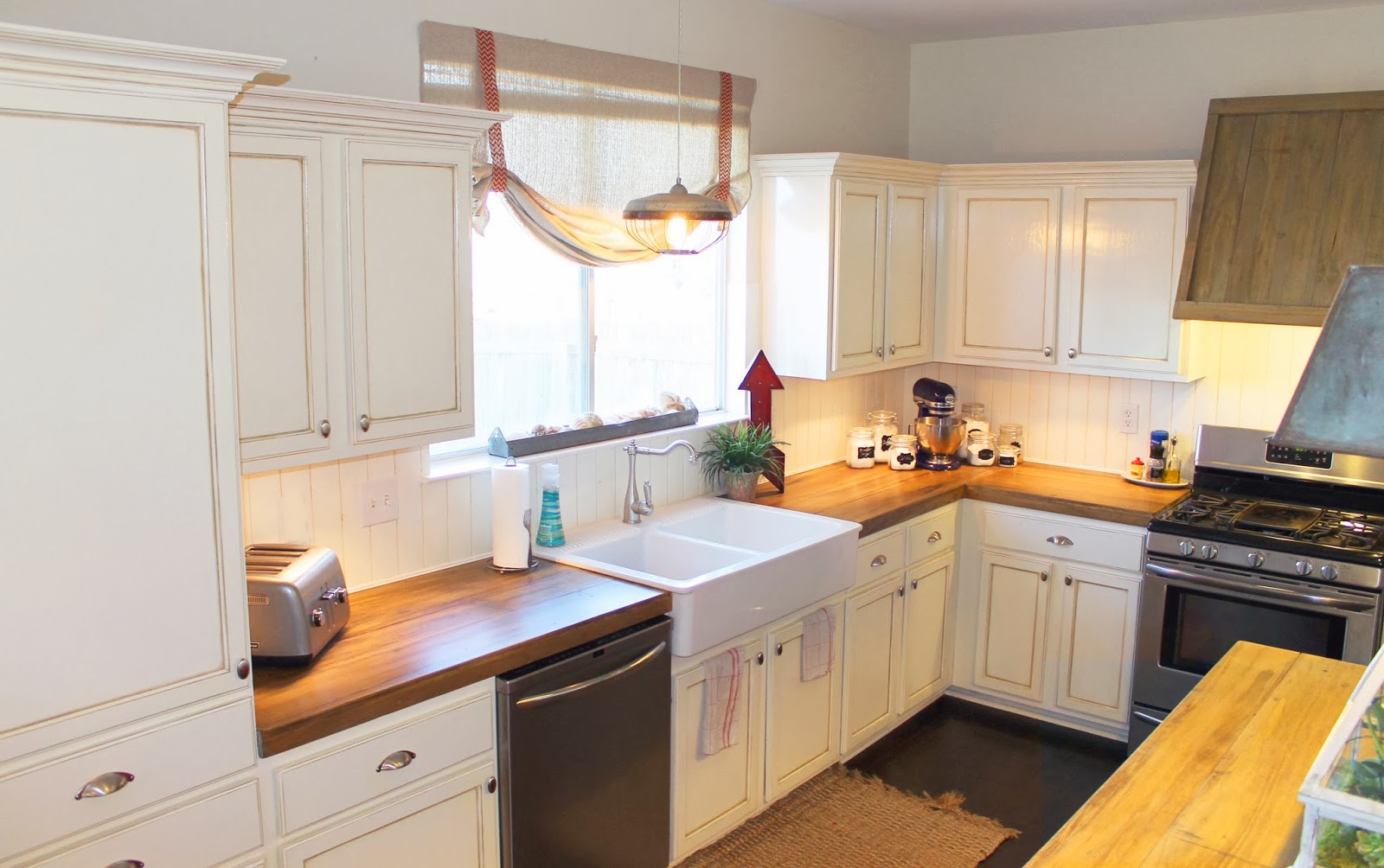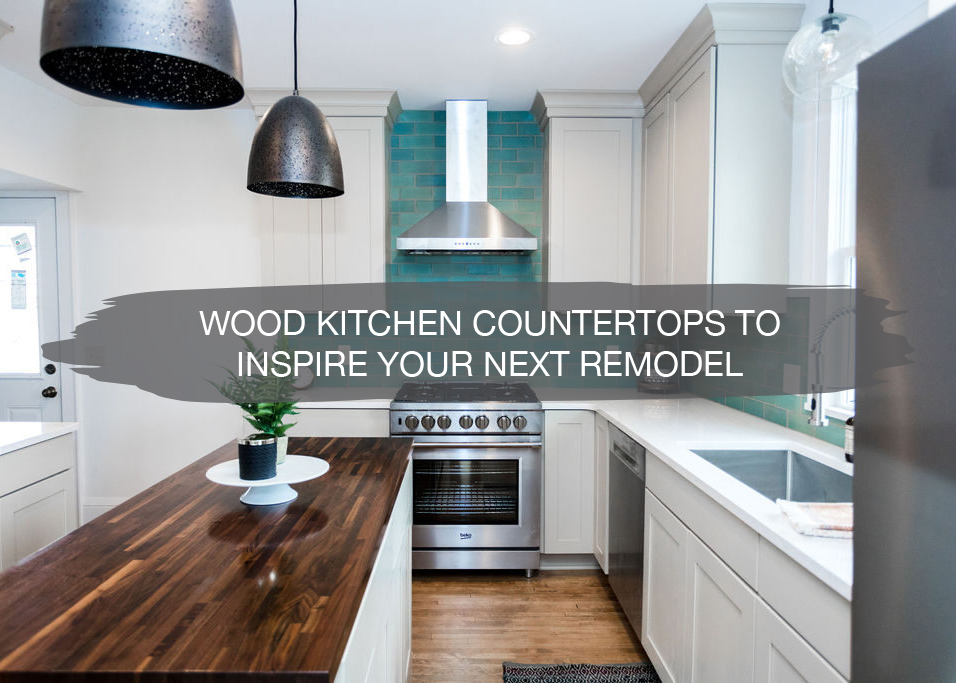Designing a modern kitchen with wood countertops involves balancing contemporary aesthetics with the warm, inviting feel of natural wood. Wood countertops bring a unique, organic element to modern kitchens, offering a beautiful contrast to sleek appliances and minimalist design features. When selecting wood countertops, it’s essential to consider the type of wood, the finish, and the overall maintenance required to keep them looking their best. The result can be a stunning and functional kitchen space that feels both stylish and welcoming.
One of the first decisions to make when opting for wood countertops is the type of wood. Hardwood options like maple, oak, walnut, and cherry are popular due to their durability and beautiful grain patterns. Each type of wood has its own unique characteristics and color variations, allowing homeowners to choose a style that complements their kitchen design. For instance, walnut offers a rich, dark finish that pairs well with stainless steel appliances, while maple provides a lighter, more uniform appearance that suits minimalist settings.

The finish applied to wood countertops is another critical factor. There are several types of finishes to consider, including oil, varnish, and polyurethane. An oil finish, such as mineral oil, penetrates the wood and provides a natural look while making minor scratches easier to repair. Varnish and polyurethane offer a more durable, water-resistant surface but can give the wood a slightly glossy appearance. Choosing the right finish depends on your kitchen’s usage and your desired look and maintenance level.
Wood countertops require regular maintenance to keep them looking their best and to protect them from water damage, stains, and scratches. This includes routine cleaning with mild soap and water, followed by drying the surface thoroughly. Applying a food-safe oil finish periodically helps maintain the wood’s moisture balance and prevents drying and cracking. Additionally, using cutting boards and avoiding direct contact with hot pots and pans can significantly extend the lifespan of wood countertops.

One of the main benefits of wood countertops in a modern kitchen is their versatility. Wood can be easily integrated into various design schemes, from ultra-modern to rustic chic. In a modern kitchen, wood countertops can soften the starkness of minimalist designs and add a layer of texture and warmth. Combining wood with materials like stainless steel, glass, and concrete can create a balanced and visually appealing kitchen environment.
Wood countertops also have a unique tactile quality that many other countertop materials lack. The smooth, warm surface of wood feels pleasant to the touch and can make cooking and meal prep more enjoyable. This sensory experience adds a layer of comfort and homeliness to modern kitchens, which can sometimes feel cold or impersonal due to their streamlined designs.
Sustainability is another important consideration when choosing wood countertops. Opting for wood from responsibly managed forests or reclaimed wood can make your kitchen more eco-friendly. Many manufacturers now offer certified sustainable wood options, allowing you to create a beautiful kitchen while minimizing your environmental footprint. Reclaimed wood, with its unique history and character, can also add a sense of timelessness and story to your kitchen design.
Wood countertops are naturally anti-bacterial, which makes them a hygienic choice for kitchen surfaces. The natural properties of wood inhibit the growth of bacteria, providing a safe surface for food preparation. This can be particularly beneficial in busy kitchens where cleanliness and food safety are paramount. Regular cleaning and maintenance further enhance the hygienic properties of wood countertops.
Another advantage of wood countertops is their ability to be repaired and refinished. Unlike some other materials, wood can be sanded down to remove stains, scratches, and other imperfections, restoring its original beauty. This makes wood countertops a long-term investment, as they can be renewed rather than replaced. With proper care, wood countertops can last for decades, providing enduring beauty and functionality.

Incorporating wood countertops into a modern kitchen also allows for customization. Wood can be cut and shaped to fit specific design needs, whether you want a seamless look with integrated sinks and drainboards or a more traditional butcher block style. This flexibility in design means you can create a kitchen that perfectly suits your cooking habits and aesthetic preferences.
Despite their many advantages, wood countertops are not without challenges. They are more susceptible to water damage and staining than some other materials, so they require diligent care. Spills should be wiped up promptly, and the wood should be kept dry to prevent warping or cracking. Choosing a finish that offers adequate water resistance can help mitigate these risks and make maintenance easier.
In a modern kitchen, wood countertops can also serve as a focal point. Their natural beauty and unique grain patterns draw the eye and add visual interest. Pairing wood countertops with simple, streamlined cabinetry and modern hardware creates a balanced look that is both sophisticated and inviting. The interplay of natural and man-made materials can create a kitchen space that feels harmonious and well-designed.

Cost is another factor to consider when choosing wood countertops. While they can be more affordable than some high-end materials like marble or quartz, the price can vary significantly depending on the type of wood and the complexity of the installation. Custom designs and finishes can also add to the cost. However, the longevity and timeless appeal of wood countertops often make them a worthwhile investment.
For those concerned about the environmental impact of their kitchen renovation, wood countertops offer a renewable resource option. Unlike synthetic materials, wood can be regrown and sustainably harvested. Choosing a wood species that is abundant and responsibly sourced ensures that your kitchen remodel supports environmental sustainability. Additionally, wood’s natural insulation properties can contribute to energy efficiency in the home.
Finally, the aesthetic appeal of wood countertops in a modern kitchen cannot be overstated. They provide a unique blend of tradition and innovation, grounding modern design in natural beauty. Whether you choose a light, airy wood or a dark, rich variety, wood countertops can transform a kitchen into a warm, welcoming space. The ability to customize and maintain wood ensures that your countertops will continue to be a highlight of your kitchen for many years to come.

Common Mistakes to Avoid
When incorporating wood countertops into a modern kitchen, it’s important to avoid certain common mistakes to ensure longevity and aesthetic appeal. One frequent mistake is neglecting to seal the wood properly. Without adequate sealing, wood countertops are prone to water damage and staining. Using a high-quality, food-safe sealant can protect the wood and maintain its appearance over time.
Another mistake is not considering the kitchen’s overall humidity and temperature levels. Wood expands and contracts with changes in humidity, which can lead to warping and cracking if not properly accounted for. Ensuring that your kitchen has stable humidity levels and using appropriate sealants can mitigate these issues. It’s also advisable to avoid placing wood countertops near heat sources like ovens and dishwashers.
Improper installation is another common pitfall. Wood countertops need to be installed with precision to ensure they are level and properly supported. Incorrect installation can lead to gaps, uneven surfaces, and even damage to the wood over time. Hiring a professional with experience in installing wood countertops is often worth the investment to ensure a flawless finish and structural integrity.

Failing to maintain the wood is another significant oversight. Regular oiling and cleaning are essential to keep wood countertops looking their best and to protect them from damage. Neglecting this maintenance can lead to drying, cracking, and a dull appearance. Establishing a regular maintenance routine can prevent these issues and prolong the life of your countertops.
Choosing the wrong type of wood for your kitchen’s specific needs can also be a costly mistake. Some woods are more durable and resistant to moisture than others. For example, while cherry and walnut are beautiful, they may not be as hard as maple or oak, making them more susceptible to dents and scratches. Selecting a wood species that matches your kitchen’s usage and maintenance capabilities is crucial for long-term satisfaction.
Ignoring the need for cutting boards and trivets is another common error. Directly cutting on wood countertops can lead to scratches and knife marks, while placing hot pots and pans on the surface can cause burns and discoloration. Using cutting boards for food prep and trivets for hot cookware can protect your countertops and keep them looking pristine.
Last, not considering the overall kitchen design and how wood countertops will integrate with other elements can lead to a disjointed look. It’s important to think about how the wood will complement your cabinetry, flooring, and appliances. A cohesive design plan that balances modern elements with the natural beauty of the wood will create a harmonious and visually appealing kitchen.

How do I maintain wood countertops to keep them looking new?
Maintaining wood countertops involves regular cleaning and oiling. Clean the surface with mild soap and water, and dry it thoroughly to prevent water damage. Apply a food-safe oil, such as mineral oil, every few months to keep the wood moisturized and prevent drying and cracking. Using cutting boards and trivets will protect the surface from scratches and heat damage. Avoid using harsh chemicals or abrasive cleaners, as they can damage the wood’s finish. Regular maintenance will keep your countertops looking beautiful and extend their lifespan.
Are wood countertops durable enough for a busy kitchen?
Wood countertops are durable but require proper care to withstand the demands of a busy kitchen. Hardwoods like maple, oak, and walnut are particularly durable and resistant to wear and tear. Regular maintenance, such as oiling and cleaning, helps protect the wood from damage. While wood can scratch and dent, these imperfections can often be sanded out and refinished. Using cutting boards and avoiding direct contact with hot pots and pans will also help maintain the wood’s durability. With the right care, wood countertops can last for decades.
What are the best types of wood for kitchen countertops?
The best types of wood for kitchen countertops include hardwoods like maple, oak, walnut, and cherry. Maple is popular for its hardness and light color, making it a versatile choice for various kitchen styles. Oak offers a distinctive grain pattern and durability. Walnut provides a rich, dark finish that adds elegance to any kitchen. Cherry has a warm, reddish tone that deepens with age. Each type of wood has unique characteristics, so choosing the right one depends on your aesthetic preferences and how you plan to use and maintain the countertops.

Can wood countertops be used near sinks and other water sources?
Wood countertops can be used near sinks and other water sources, but they require proper sealing and maintenance to prevent water damage. Applying a high-quality, water-resistant finish helps protect the wood from moisture. It’s important to promptly wipe up any spills and avoid letting water sit on the surface. Regular oiling also helps maintain the wood’s moisture balance. While wood countertops can be more vulnerable to water damage than other materials, with diligent care and maintenance, they can be a beautiful and functional addition to areas near sinks.
How do I choose the right finish for my wood countertops?
Choosing the right finish for wood countertops depends on your desired look and maintenance level. Oil finishes, like mineral oil, provide a natural look and make minor scratches easier to repair but require regular reapplication. Varnish and polyurethane finishes offer greater durability and water resistance but can give the wood a glossy appearance. Water-based finishes are also an option for those seeking low-VOC and environmentally friendly products. Consider the level of use your countertops will receive and how much maintenance you’re willing to perform when selecting a finish.
Are wood countertops environmentally friendly?
Wood countertops can be environmentally friendly if sourced from responsibly managed forests or reclaimed wood. Many manufacturers offer certified sustainable wood options, ensuring that the wood is harvested in an eco-friendly manner. Reclaimed wood is another sustainable choice, as it repurposes existing materials and adds unique character to your kitchen. Wood is a renewable resource, and choosing durable, high-quality wood countertops that can be repaired and refinished rather than replaced contributes to sustainability. Properly maintained wood countertops also have a long lifespan, reducing the need for frequent replacements and minimizing waste.

Wood Kitchen Countertops to Inspire your Next Remodel

home with a farmhouse feel. Rustic wood kitchen island with white

Related Posts:
- Making Kitchen Countertops
- Redo Kitchen Countertops Kit
- Innovative Kitchen Countertops
- Bedrock Creations Kitchen In A Box Granite Countertops
- Resurfacing Kitchen Countertops With Concrete
- Granite Kitchen Countertops Denver
- Gray Kitchen Cabinets With Granite Countertops
- Bamboo Kitchen Countertops Cost
- How To Caulk A Kitchen Sink Countertop
- Painting Ceramic Tile Kitchen Countertops